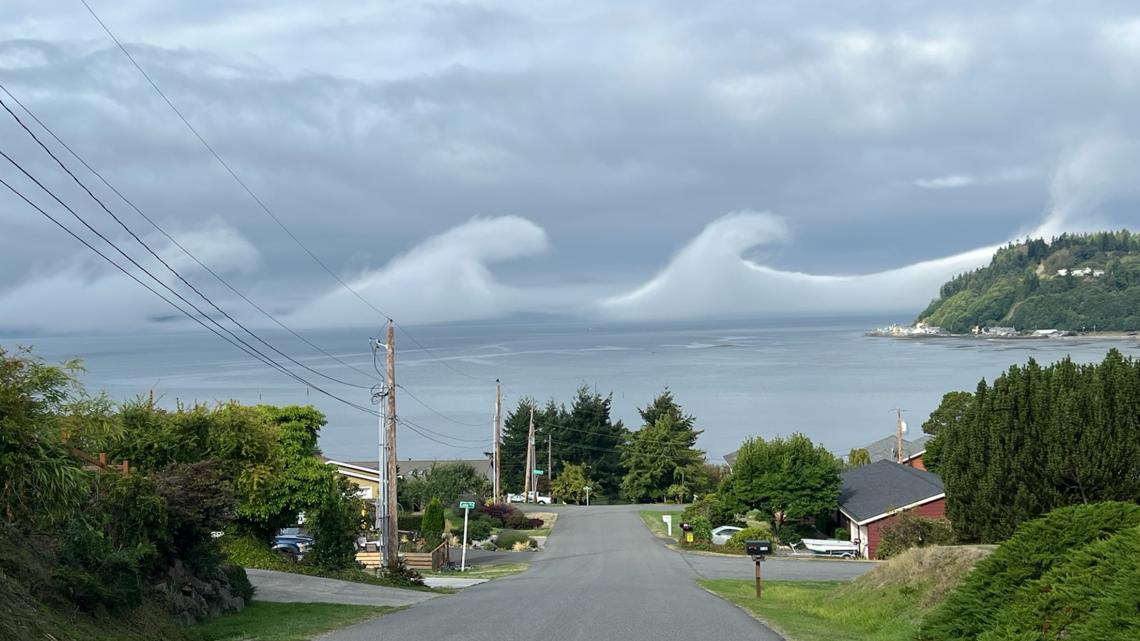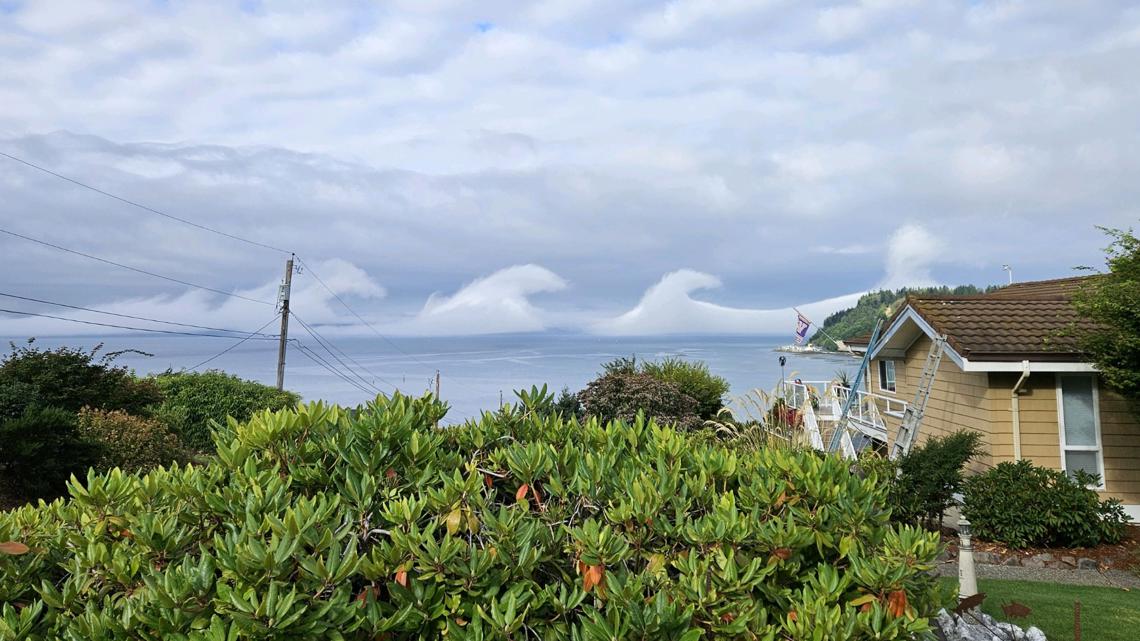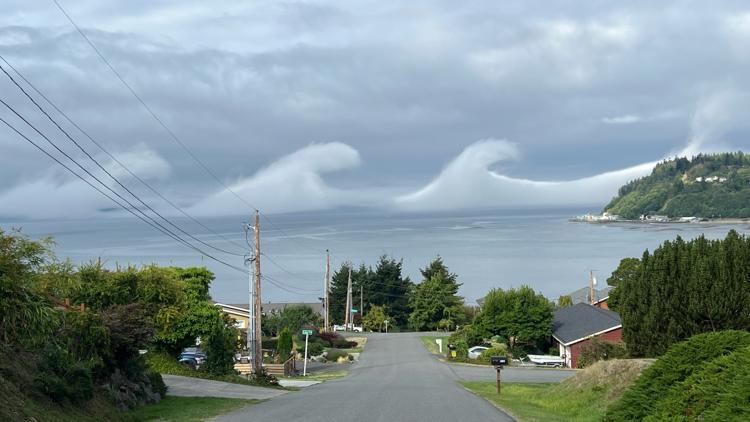WHIDBEY ISLAND STATION, Wash. — Residents of and near Whidbey Island witnessed a weather phenomenon on Tuesday as "wave clouds" lined the horizon.
Kelvin-Helmholtz clouds or fluctus clouds, as the formations are named, are very rare over Washington, according to KING 5 Chief Meteorologist Mike Everett.
The clouds look like literal waves in the sky, a series of rounded crests that are worthy of a double-take. Often referred to as “wave clouds," the clouds signal a difference in wind speed and density between two layers.


The best example would be wind blowing over water, Everett said. The wind is moving much faster than the water, and the water is much denser than the air.
The end result is that the wind can’t move the entire body of water, but it can cause a ripple or waves on the surface of the water.
This causes the “wave” shape to push over the tops of the clouds in the sky, creating a rippled appearance.
Pilots and mariners have long relied on these cloud forms, Everett explained. The clouds indicate wind direction and serve as a red flag for aircrafts that the area could experience turbulence.
Kelvin-Helmholtz clouds are named for Lord Kelvin and Hermann von Helmholtz, who studied the physics of the instability that leads to this type of cloud formation.
Some also think that the sky wonders might have also have been the inspiration for Van Gogh’s painting Starry Night.




